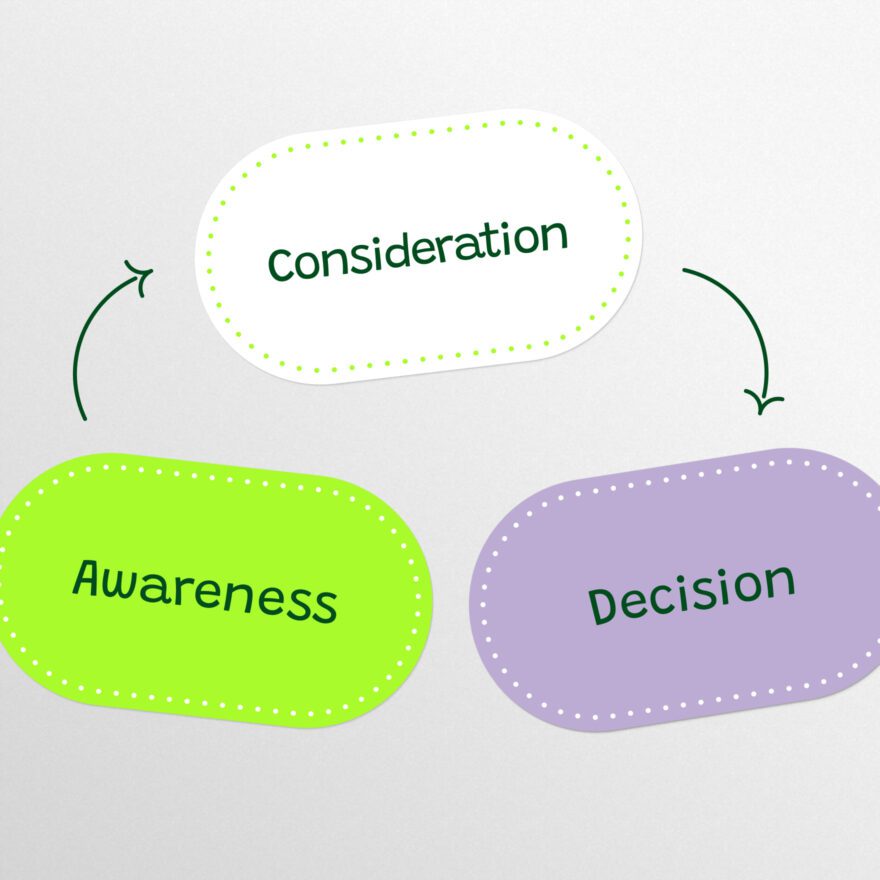Conversion optimization as part of continuous website development
Conversions are among the most crucial metrics for the success of a website. A conversion is the accomplishment of a desired action from the user that is essential for the company’s business objectives. Depending on the website, the desired action could be, for instance, making a purchase, subscribing to a newsletter, or filling out a contact form.

Conversion optimization begins with website goals and high-quality visitor data
Conversion optimization is a process aimed at improving visitor conversion rates and the overall user experience of a website. It involves analyzing visitor behavior on the site, identifying potential issues in the conversion path, and implementing the planned changes to guide more visitors toward desired actions.
The website’s goals play a key role in conversion optimization. Pre-defined goals specify what is expected from website visitors and what aspects need to be focused on. These goals are based on the company’s business objectives and are transformed into measurable and trackable metrics through systematic analytics.
Well-designed and constructed website tracking ensures that every step of the visitor journey can be monitored. By analyzing visitor data, potential issues and bottlenecks in the conversion path can be identified. Based on the analysis, assumptions can be made about factors that may affect visitor conversion at various points in the path.
In the analysis, it’s advisable to delve into one specific aspect at a time. For instance, if your online store experiences a decline in sales for a particular product category, you should examine this. You might discover, for example, that visitors are reaching the product pages but not adding products to the cart. This could lead you to the conclusion that optimizing the product page and increasing the number of visitors who add products to the cart should be a priority. Similarly, if a contact page receives many visitors but only a few form submissions, you should focus on making the contact process smoother and more user-friendly.
When contemplating solutions based on data-driven findings, it’s valuable to harness all the available expertise. At Evermade, digital marketing professionals, developers and designers all work under the same roof. This means that if a web analyst identifies a potential issue in the conversion path, they can easily communicate their findings to a designer. The designer can then approach the issue from the perspective of improving the user experience.
Validating hypotheses through A/B Testing
Assumptions based on visitor data can be easily A/B tested to validate their accuracy. This type of testing efficiently determines whether the anticipated change actually has an impact on the site’s conversion rate.
If the A/B test confirms the hypothesis derived from the data, the change can be implemented on the site. If, on the other hand, the test indicates that the proposed change doesn’t produce the desired outcome, unnecessary development work is avoided. This ensures that resources devoted to website development are targeted correctly.
Conversion optimization is a continuous effort
Conversion optimization doesn’t end with a single successful A/B test and its potential effects. Different target audiences have distinct needs, and by recognizing these needs, efforts can be made to serve all website users in an optimal way.
After addressing a potential issue in a chosen conversion path, the focus can shift to optimizing another path or a different point along the same path. Taking this approach makes you gradually understand your visitors better, improves the user experience, and consequently boosts conversions on the site.
Thus, conversion optimization shouldn’t be viewed as a one-time project but rather as a continuous process.
The key benefits of conversion optimization
Increased sales
By improving the conversion rate, it’s possible to expand the potential customer base without necessarily driving a large influx of new traffic to the site. This leads to increased sales.
Cost efficiency
Conversion optimization leverages the existing customer base of the site, ensuring that marketing campaigns are effective and the generated traffic is utilized optimally. Through conversion optimization, the development efforts for the website are also directed accurately, avoiding heavy and costly implementations based on guesswork.
A better user experience
Investing in conversion optimization enhances the understanding of customers and their needs, leading to a better user experience on the site as well as improved search engine rankings. This builds trust in the products and services offered by the company and encourages visitors to return to the website.
Interested in conversion optimization? Contact us!











